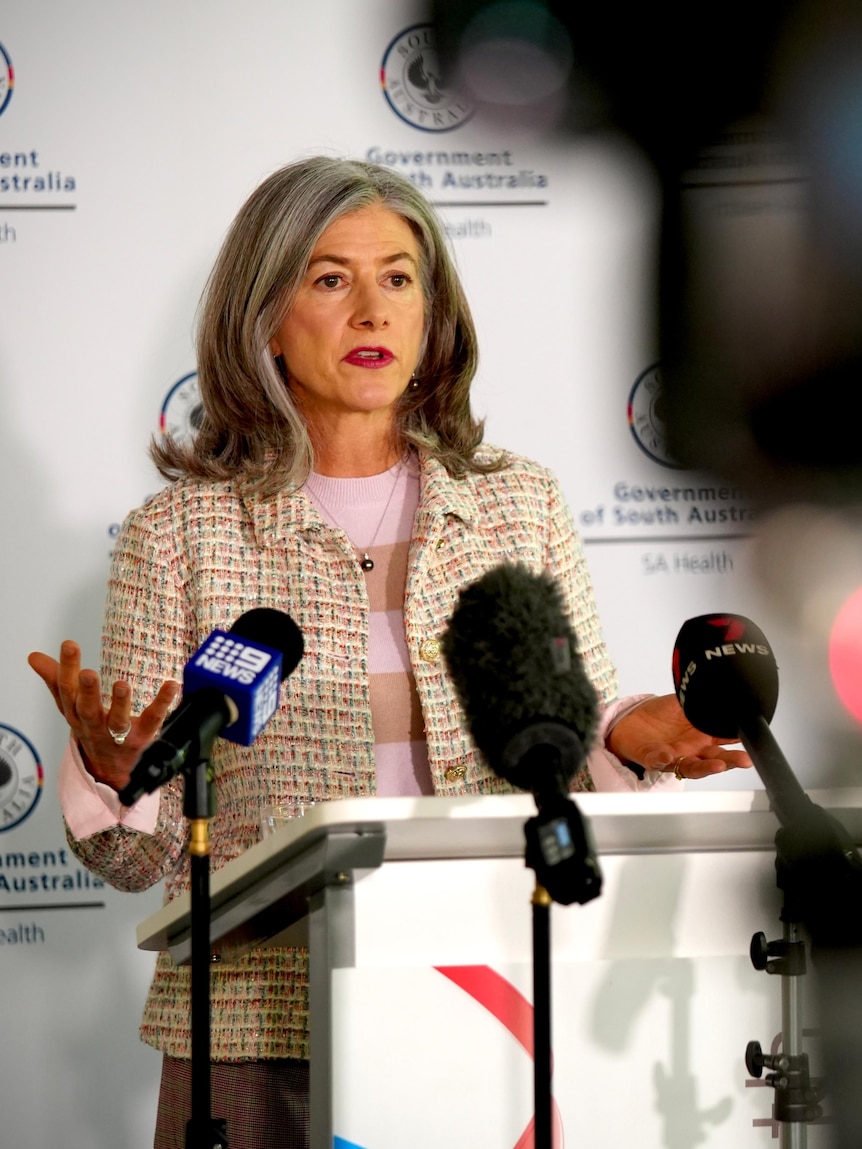There have been two more cases of tuberculosis (TB) detected in South Australia.
Key points:
- Two new cases of tuberculosis identified in SA
- The cases are a child and a woman in her 60s
- One of the cases is not yet linked to existing clusters, with the possibility of a third cluster
The new cases include a child and a woman in her 60s.
While one of the cases is a close family member related to the Murraylands cluster, health authorities are not yet sure of the origins of the second case.
“That person is actually quite sick so they were admitted to hospital and the contact tracing is being undertaken over the last couple of weeks to make sure we’re looking for high-risk contacts and those people can be screened,” Professor Spurrier said.
“It is possible that it might indeed be a third cluster. Until we get the genomics back from that person’s sputum sample, we won’t be able to say.”
Professor Spurrier said the positive case had travelled to communities in the Anangu Pitjantjatjara Yankunytjatjara (APY) Lands, where there are currently 13 active cases.
She said she wanted to reassure the community that contracting tuberculosis was much more difficult than catching a virus such as COVID-19.
“Tuberculosis is a bacteria, it’s not a virus and it’s very slowly growing so it replicates or divides very slowly,” she said.
“You can’t just catch TB walking past someone in a supermarket, but we look at high-risk close contacts as someone you would spend a long length of time with, and that’s generally someone in your household.”
She said there were two types of tuberculosis – active TB, and latent TB infections, which includes symptoms that are not infectious but can progress to active TB over time.
Professor Spurrier said there were nine people with latent TB in the Murraylands, and 31 identified latent TB cases in the APY Lands.
People with latent TB are being treated to prevent the bacteria from becoming an active case.
She said only active cases were documented as part of official cluster numbers.
The number of cases in the state was described as a “very, very significant increase” compared to SA’s TB cases in previous years.
“We want to get on top of this and we want to reduce the risk for active TB in our Aboriginal community going into the future,” Professor Spurrier said.
Posted




